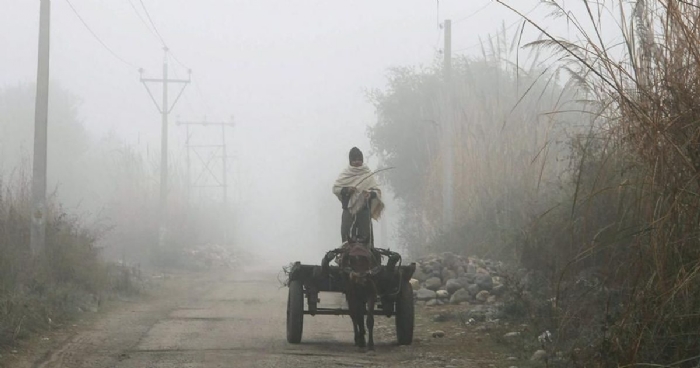Owing to low-lying cloud cover, IMD predicts further intensification of cold wave in North India
Total Views |
New Delhi, December 24: The India Meteorological Department (IMD) has today warned that the ongoing ‘cold days’ will intensify into a ‘cold wave’ conditions from December 25 in several parts of north and north-west India, including Punjab, Haryana, Chandigarh, Delhi and Uttar Pradesh as well as Rajasthan.

The IMD’s cutoff for such conditions is a minimum temperature of at most 10 degrees Celsius for the plains and 0°C for hilly areas.
“In the past week, cold day to severe cold day conditions had been reported at most places over Punjab, Haryana, Chandigarh, Delhi, western Uttar Pradesh and Rajasthan on two days each; at many places over Punjab, Haryana, Chandigarh, Delhi and Uttar Pradesh on one day; at a few places over western Madhya Pradesh on one day; at isolated places over eastern Madhya Pradesh, eastern Uttar Pradesh, Jammu & Kashmir and Himachal Pradesh on one day each during the week,” says the IMD.
The reason for these cold days was a low-lying cloud cover over the north Indian plains, which could have been caused by the moisture incursion caused by the incoming western disturbances and the induced cyclonic circulations over the region since the beginning of December. This has also caused significant precipitation, both snow and rain, in the region which preceded the cold day conditions in many places.
In the week from December 12-18, the country as a whole received 183 per cent excess precipitation while north-west India received 448 per cent precipitation more than it receives during this time of the year. In fact, the overall post monsoon (after October 1) precipitation in the country has also been high at 35 per cent above normal.
A cold day is defined on the basis of maximum day temperature while a cold wave is defined by looking at minimum temperatures recorded on two consecutive nights. The departures in temperatures for both extreme events are 4.5-6.4°C below normal. When the departure exceeds 6.5°C, severe conditions are declared.
For a cold wave, apart from this, another parameter is the absolute minimum temperatures recorded for two consecutive days which has to be equal or below 4°C for the plains. Severe conditions are declared when the minimum goes below 2°C.





